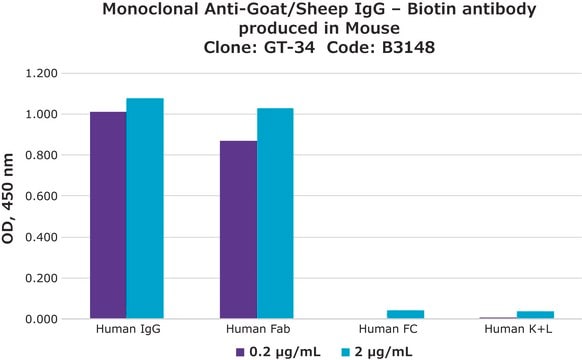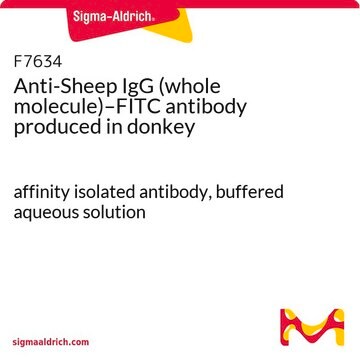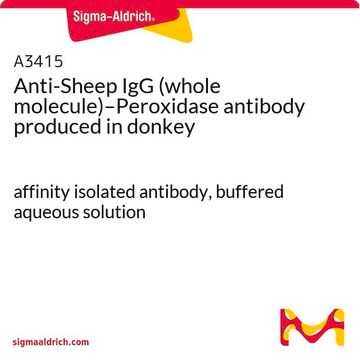F4891
Anti-Goat/Sheep IgG−FITC antibody, Mouse monoclonal
clone GT-34, purified from hybridoma cell culture
Sinônimo(s):
Monoclonal Anti-Goat/Sheep IgG
Selecione um tamanho
Selecione um tamanho
About This Item
Produtos recomendados
fonte biológica
mouse
conjugado
FITC conjugate
forma do anticorpo
purified from hybridoma cell culture
tipo de produto de anticorpo
secondary antibodies
clone
GT-34, monoclonal
Formulário
buffered aqueous solution
reatividade de espécies
sheep, goat, bovine
não deve reagir com
rat, canine, mouse, rabbit, guinea pig, chicken, horse, pig, feline, human
condição de armazenamento
protect from light
técnica(s)
dot immunobinding: 1:32
immunohistochemistry (formalin-fixed, paraffin-embedded sections): 1:20
particle immunofluorescence: 1:32
Isotipo
IgG1
Condições de expedição
dry ice
temperatura de armazenamento
−20°C
modificação pós-traducional do alvo
unmodified
Procurando produtos similares? Visita Guia de comparação de produtos
Categorias relacionadas
Descrição geral
Especificidade
Aplicação
Ações bioquímicas/fisiológicas
forma física
Armazenamento e estabilidade
Exoneração de responsabilidade
Não está encontrando o produto certo?
Experimente o nosso Ferramenta de seleção de produtos.
Código de classe de armazenamento
10 - Combustible liquids
Classe de risco de água (WGK)
nwg
Ponto de fulgor (°F)
Not applicable
Ponto de fulgor (°C)
Not applicable
Equipamento de proteção individual
Eyeshields, Gloves, multi-purpose combination respirator cartridge (US)
Escolha uma das versões mais recentes:
Certificados de análise (COA)
Não está vendo a versão correta?
Se precisar de uma versão específica, você pode procurar um certificado específico pelo número do lote ou da remessa.
Já possui este produto?
Encontre a documentação dos produtos que você adquiriu recentemente na biblioteca de documentos.
Active Filters
Nossa equipe de cientistas tem experiência em todas as áreas de pesquisa, incluindo Life Sciences, ciência de materiais, síntese química, cromatografia, química analítica e muitas outras.
Entre em contato com a assistência técnica








